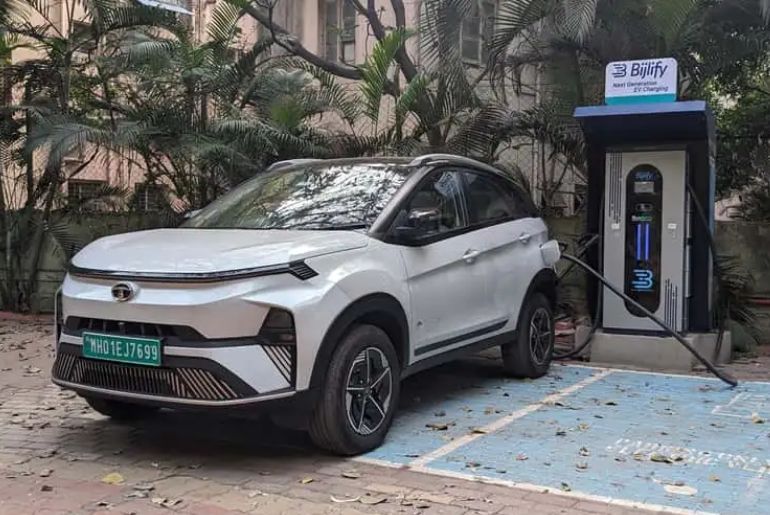India is home to 83 of the world’s 100 most polluted cities. If the world has to decarbonize, India’s participation is indispensable. Indian carmakers realize that increasing the adoption of EVs is crucial for the planet. Tata is doing way more than its rivals in that department.
Tata Motors is a subsidiary of Tata Group, a sprawling business empire with a presence in steel, IT services, aviation and more. And Tata Motors is the parent company of Jaguar Land Rover, acquired from Ford in 2008 for $2.3 billion amidst the global financial crisis. JLR has flourished under Tata Motors and the parent company is now the third-largest car manufacturer in India.
Tata offers several affordable EVs in India, but the Nexon compact SUV has been the overall best seller. It has transformed Tata’s fortunes, helping it achieve a dominant 73% EV market share.
The Nexon EV starts at about $17,363 (14.4 lakh rupees, before taxes and fees) and goes up to $23,115 (19.29 lakh rupees). The average car price in India is about $14,000 (11.5 lakh rupees), so that’s a good starting point. It is already cheaper than its rivals, the Hyundai Kona Electric and MG ZS EV. At this price point, I’m not sure what more Tata could have done to make it better.
It doesn’t require gigacasting, a million price cuts, or Full-Self Driving (Supervised) to succeed. A fresh design, quality interior, must-have connected car features and affordability resonate with its audience—tech-savvy middle-class Indians who mostly charge at home and predominantly use their EV in the city, occasionally venturing out for planned intercity trips.
Tesla, when it begins selling EVs in India, would be a luxury brand, out of reach for the masses. Unless it launches a sub-$20,000 EV, I don’t see it challenging Tata Motors in its home market. Moreover, next-generation Tata EVs built on BEV native platforms are in the pipeline. If Western carmakers want to gain a foothold in the world’s third-largest passenger car market, they better keep a close eye on Tata’s plans. And maybe even learn a trick or two from its playbook.

